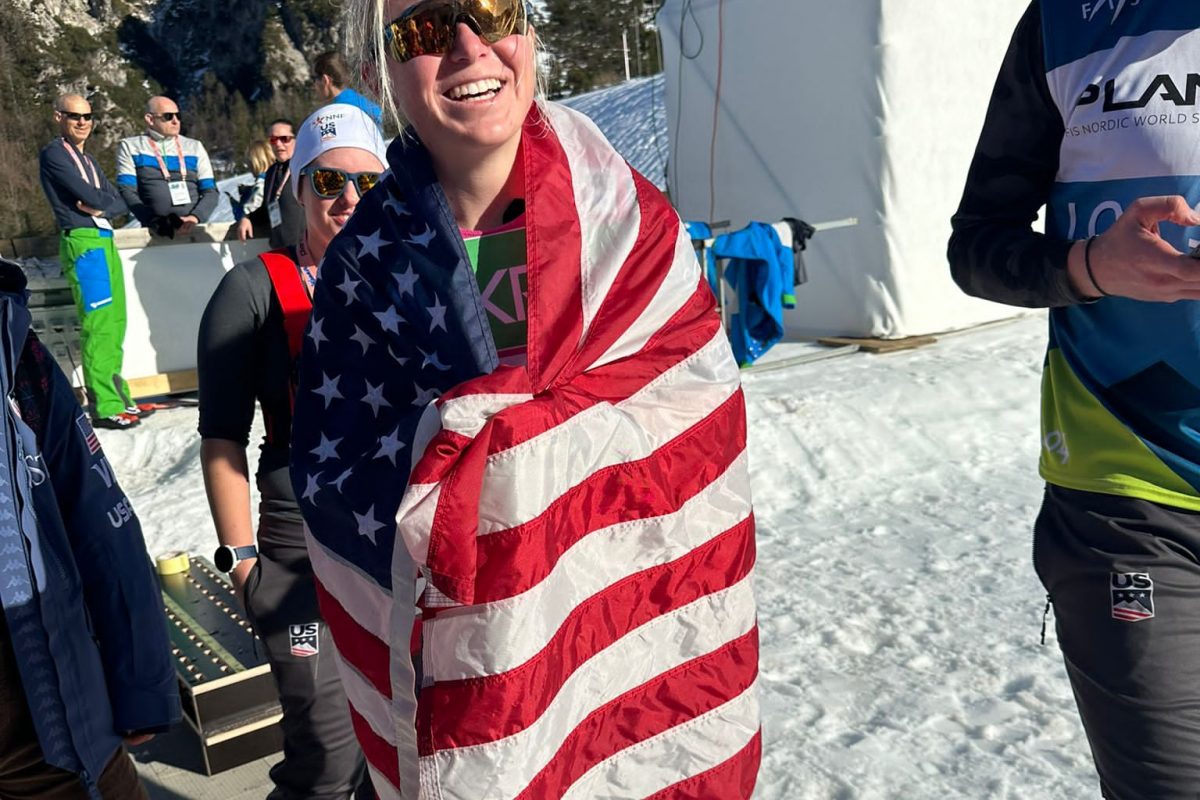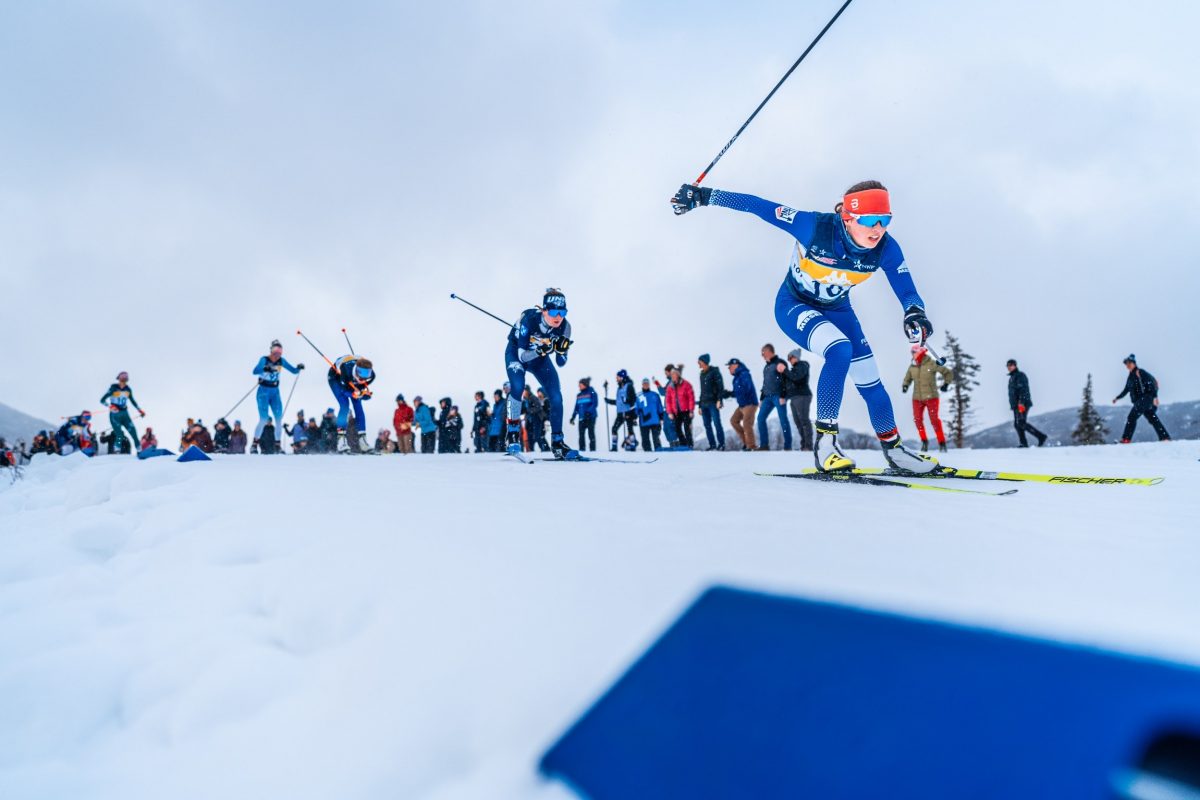Note: This is the second of two pieces based on an interview with Biathlon Canada’s High Performance Director, Chris Lindsay, from earlier this spring. The first focused on a difficult funding situation with Own The Podium.

There was a time when biathlon in Canada was a big deal – and it wasn’t that long ago. The very first year that women’s biathlon was contested in the Olympics, in Albertville in 1992, Myriam Bédard won a bronze medal. Two years later, in Lillehammer, she was a double gold medalist in the 7.5 k sprint and the 15 k individual. But while Bédard is still inspiring to a generation of young biathletes, particularly those in her native Quebec, the sport took a dive in the conscience of the average Canadian.
It’s not because the athletes aren’t good; last year, three different Canadians had multiple top-tens on the World Cup. At the 2010 Olympics on home turf, Jean Philippe Le Guellec placed sixth in the sprint and had two more top-20’s, producing a wave of excitement. But none of the team members had been medal favorites, and none took home any hardware – and as Canada’s cross country team has shown, titles and medals go a long way towards building support.
But regardless of funding issues, the team has been making do with a small base of athletes, and 2012 showed significant improvements compared to the previous World Cup season. FasterSkier talked to Biathlon Canada’s High Performance Director, Chris Lindsay, about the challenges of his job. The following interview has been edited and condensed.
FasterSkier: Biathlon Canada has a lot more members than its U.S. equivalent. Would you say that participation is one of your strong points?
Chris Lindsay: We have pretty good regional representation, which has worked out well when the goals have been to promote the sport of biathlon within Canada. We have programming going on across the country which leads to development of clubs, development of ranges and coaching programs and officiating programs. Our ability to create clubs and coaches, and our officiating program – we have a very built-out system, where we are very good at creating everything that you need in order to have people that do biathlon.
FS: Canada has had a lot of medal-winning performances at the youth and junior level recently. Is this connected to the strength of the provinces and clubs?
CL: We tend to do very well at the youth level, and have some success at the junior level. But we don’t have a focus on how to take a good junior and turn them into a great senior. That is the remaining piece of our global challenge.
FS: So what happens to those youth and junior medalists?
CL: When those athletes convert into seniors, we see just an abnormal recession in their ability to compete. I’m not sure whether it’s that our athletes get worse – I don’t think they get worse – but they don’t accelerate their development the way that everyone else seems to. And this is one of the big things that we track: internationally, what do you need to be doing at World Juniors to eventually turn into a medalist later on down the line? We’re seeing a significant difference in the pattern of success in Canadian athletes compared to the international standard. And that’s one of my big jobs, is to try to address that.
FS: What are you doing?
CL: We’ve identified a few areas. [Juniors] are going for a single peak season, they’re only going for one race. What we’ve done, particularly with our women, in the past five years is that as soon as we have someone who is a top junior we would immediately put them on the World Cup all year. Instead of a single-peaking season you’re now expected to perform at a relatively high level the entire season, and even with that increase of intensity they are still expected to peak at the World Championships and Olympics, and our athletes just weren’t able to cut it. .
FS: What about the transition from smaller junior races to bigger senior ones, like World Championships in Ruhpolding this year, and all of the travel?
CL: [World Juniors is] a pretty big show compared to what they are used to, but it’s manageable. They will have been to bigger cross country ski races, or track meets. But [as a senior] the difference is that you go to Ruhpolding, Oslo, or Khanty, or any of these insane circuses where everything is different, and everything is a greater stress level, and the young athletes have simply not been exposed to this enough in order to get over that level of distraction.
FS: So how do you prepare them for that?
CL: One of the strategies is that we basically don’t send our top juniors or even our first or second-year seniors to the World Cup or the World Championships unless we have to in order to maintain Olympic qualification. We know they’re not going to perform. What are we teaching them if they go and they come in fighting for 90th place? Or at the World Championships they’re fighting for 130th place?
FS: Is that why there has been a larger focus on the IBU Cup tours recently?
CL: This year was the first year that we really put a lot of effort into the IBU Cup, and obviously it paid off. Well – we had success. If it paid off, we’ll see in three years. Going forward, we are trying to put the right athletes at the right competitions at the right time in order to give them the best opportunity possible. When I see athletes like Yolaine Oddou, or Nathan Smith, or even Scott Gow, they need to have some exposure to the World Cup at different times. But they also need to be in a position where they’re hungry to win. Finishing in the top 16 constantly on the IBU Cup is that kind of positive reinforcement that they need, and once they are able to show that they can pull off a full season of decent results on the IBU Cup level, then they are ready to go have a prolonged exposure on the World Cup.
FS: So would you leave roster spots unfilled if you didn’t think athletes were ready?
CL: I know I’m unpopular in Canada for saying this, but if we don’t have four men and four women who are performing on the World Cup – and I would suggest performance starts at 40th place, or at least a reasonable expectation of 40th place, I mean, you’ll always have days when it’s just not happening. – then I don’t have a problem with losing World Cup starting positions, as we did with the men. The reality is that we went down.
FS: That’s kind of incredible, considering that the results by Brendan Green and Jean Philippe Le Guellec were so strong this season.
CL: I don’t think we went down necessarily because our athlete were worse, I think it was quite a successful season, but we didn’t have the support from our third and fourth athletes, and that’s why we ended up losing a spot. With the women, we earned our way up to four spots, but I don’t actually expect that we will execute all of those spots. There are more relays this year which is a complicating factor, so we’re going to have to have more people around, but if we don’t have a need for that fourth person, I’d much rather have them drive for 2 ½ hours after the relay in order to go and do an individual race or a sprint race on the IBU Cup, because I think it’s better practice for them than coming in 90th.
FS: Canada had some great finishes on the IBU Cup. Did that help with sponsors at all?
CL: We came off the IBU Cup season this year with six medals, and the athletes who won those medals were able to make a fair amount of money off of the IBU, and we got a lot of notoriety. And my firm belief is that it’s better to have a medal-winner when you’re going around trying to get money from people, rather than someone who is finishing in 80th. I don’t think it matters so much to the potential sponsor pool whether they are winning medals at the World Cup or the IBU Cup. It’s a good athlete to invest in and people want to invest in winners.
FS: Did you see an increase in visibility after the 2010 Games?
CL: I think that the experience of the 2010 Games for the sports that were able to produce medal-winners, was that we didn’t necessarily see a dramatic increase in participation, but we saw a targeted increase in participation, where we became an option for sporty athletic people who may already be predisposed to doing well. They maybe didn’t see that opportunity before.
FS: And that was important for the endurance sports?
CL: Well, kids are getting lazier these days, and also there’s just more choices available. 30 years ago, what did you do in the winter? In Canada, you either cross country skied or you played hockey or did curling. Now with the explosion of the alpine and freestyle sports – and video games – there’s a lot more to choose from. We need sport heroes to prove that you can excel in extremely difficult sports.



